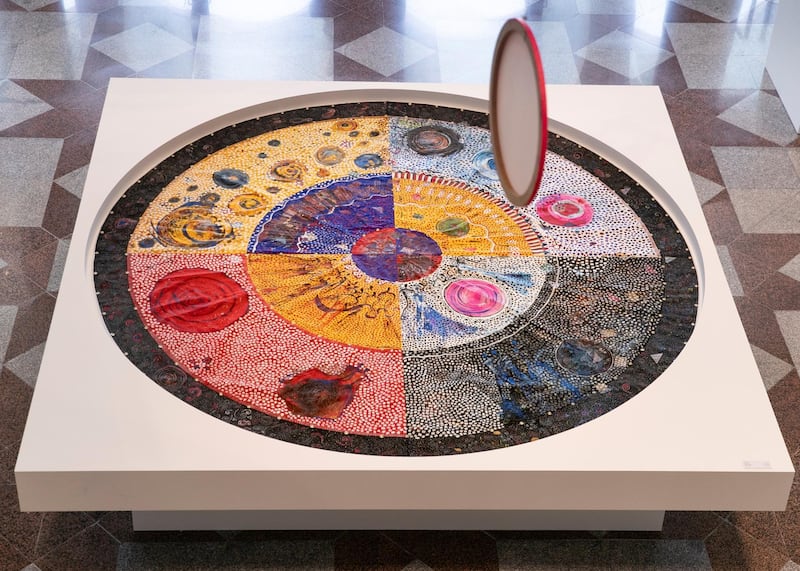Art lovers in the UAE, rejoice! The art season is picking up again, with a series of exhibition openings and the highly anticipated inaugural edition of the Sharjah Architecture Triennial kicking off next week. Abu Dhabi Art will return this month for its 11th edition, with new sections on Asian art and a line-up of interesting artists for its commissions programme.
Here's what to see across the Emirates for the rest of the year.
Dubai:
Is This Tomorrow?
London's Whitechapel Gallery presents the Dubai iteration of one of their previous shows that features installation artworks by five artist pairings, including Rana Begum and Marina Tabassum. The two artists have created Phoenix Will Rise, a constructed environment meant to serve as a space for contemplation.
Other works in the show include a metal maze, created by 6a architects from the UK and Argentinian artist Amalia Pica. The structure resembles animal pens used in slaughterhouses, and by walking through it, visitors realise how these man-made inventions exemplify our disregard for animal rights.
Until Saturday November 23 at Concrete, Alserkal Avenue. alserkalavenue.ae
Nothing Looks the Same at Night
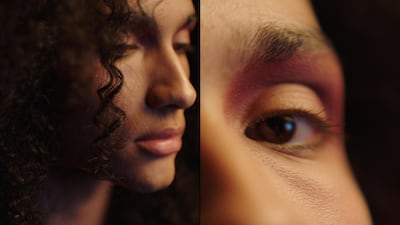
Kazim Rashid's latest video installation ventures into the deepest parts of our psyche, where our secrets and unfiltered selves lie. As the title suggests, these sides of our characters are often explored after dark. The film's non-linear narrative defies easy description, and Rashid conjures visions of forest fires and references to the film I Shot Andy Warhol, based on the story of Valerie Solanas. The fragmented nature of Rashid's film and his use of esoteric visual language asks viewers to pay close attention.
From Monday, November 18 to Thursday, February 6, 2020 at The Third Line. thethirdline.com
Phantom Limb
Jameel Art Centre’s thematic exhibition for the season considers how national identity is tied to material culture, including heritage sites and artefacts. What are the consequences for collective memory when those objects are destroyed or taken? Featuring 13 artists and collectives – including Forensic Architecture, Akram Zaatari, Kader Attia, Rayyanne Tabet and Pio Abad – the works in the show explore a variety of mediums, including sculpture, installation, video, photography and 3D rendering.
Until Saturday, February 15, 2020; Jameel Arts Centre, Dubai. jameelartscentre.org
Between Floating Worlds
Using techniques of live drawing and animation, Syrian artist Kevork Mourad presents ink drawings that reflect on the struggles of migration, whether it is forced or voluntary, and the burden of remembrance for those moving to other lands. His process involves the transfer of very fine drawings from acetate to textile, which he proceeds to cut out and layer to create three-dimensional works that bear reference to Sumerian, Babylonian and Armenian designs.
Until Monday, January 6, 2020 at Tabari Artspace. tabariartspace.com
Composition for a Public Park
Spread across Jameel Arts Centre's Jaddaf Waterfront Sculpture Park is an arrangement of speakers, each dedicated to a specific instrument, sound or voice. They are clustered into three sections that represent three themed movements developed by the Egyptian artist and composer Hassan Khan. His work compels visitors to traverse the space as they listen to each of the movement's musings, which touch on philosophy, seduction and politics.
Until Monday, June 8, 2020 at Jameel Arts Centre. www.jameelartscentre.org
Tales of Thread
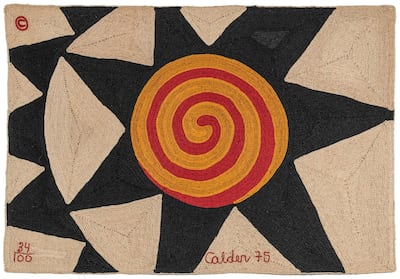
Textile art is the focus of Custot Gallery Dubai's new show, with 25 tapestries and carpets created by modern and contemporary artists, including Pablo Picasso, Sonia Delaunay, Rene Perrot and Sheila Hicks. Known for his kinetic sculptures and celestial motifs, Alexander Calder also worked with textile, and one of his star tapestries is on view. There is also Etel Adnan's painterly tapestry with playful forms and bursts of colour.
From Monday, November 18 to Thursday, March 5, 2020 at Custot Gallery. custotgallerydubai.ae
Mantra
Known for his black granite sculptures, Egyptian-Armenian artist Armen Agop also produces drawings and paintings, and these will be shown for the first time in this exhibition. The title refers to Agop’s relationship to his practice, seeing his works as tangible outcomes of a metaphysical endeavour.
From Monday, November 18 to Thursday, February 13, 2020 at Meem Gallery. meemgallery.com
Sharjah
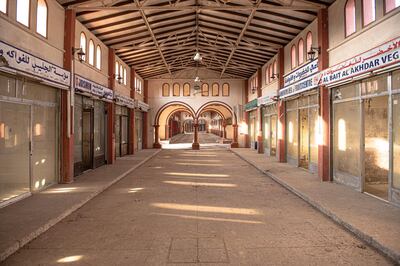
Sharjah Architecture Triennial: Rights of Future Generations
The Sharjah Architecture Triennial begins with a programme of forums, screenings and performances across the emirate. Highlights include an Awakening Ceremony for the Ngurrara Canvas II, a large-scale aboriginal painting that was used as evidence in a land claim case between the Ngurrara and the Australian government. There will also be an audiovisual presentation on reincarnation by Lawrence Abu Hamdan and a sound performance in Mleiha Fort by musician Nicolas Jaar. Themed Rights of Future Generations, the three-month long event considers how the ongoing climate crisis has been shaped by intergenerational relationships, and what role architecture can play to address this.
Opening programme runs from Saturday, November 9 to Tuesday, November 12. The triennial continues until February 8, 2020. sharjaharchitecture.org
Sunset, Sunrise
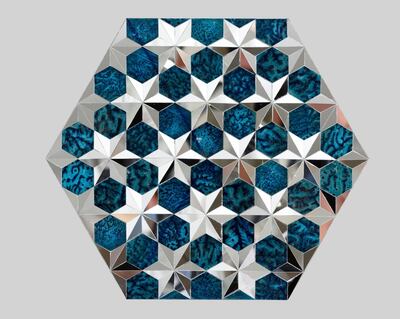
A retrospective of the work of the great Iranian artist, Monir Shahroudy Farmanfarmaian, offers visitors deeper insights into her practice, with 70 works spanning over six decades on view. Monir, who passed away at the age of 97 in April this year, was best known for her mirror mosaics, though she also produced drawings, jewellery and collages. Some will be shown for the first time in the show.
Until Saturday, December 28 at Al Hamriyah Studios, Sharjah Art Foundation. sharjahart.org
Marwan Rechmaoui: Slanted Squares
Lebanese artist Marwan Rechmaoui explores history through construction sites and structures. His latest exhibition features three bodies of work that investigate infrastructure and objects of daily urban life. Using industrial materials such as concrete, rubber and glass, Rechmaoui creates his series Pillars, which is made up of totem-like structures that look like fragments of a building and act as metaphors for urban archaeology.
Until Sunday, February 2, 2020 at Sharjah Art Foundation. sharjahart.org
Music of Letters
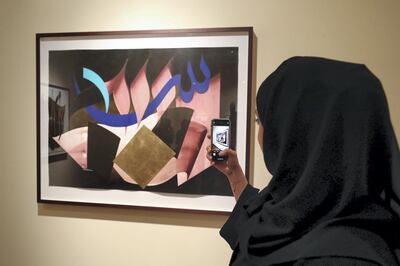
Music and calligraphy blend gracefully in Bahman Panahi's canvasses. Trained as a musician and a visual artist, Panahi has developed his own style where his sweeping strokes bring to mind a musicality, and his use of colour a sense of orchestral harmony. With 30 works on view, the exhibitions present a wide range of the Iranian artist's approach to calligraphy, whether it is to deconstruct letters to forms, or to unify characters, shapes and shades in a cohesive visual image.
Until Saturday, March 7, 2020 at Sharjah Calligraphy Museum. sharjahmuseums.ae
Colour Bar: Colour, Space and Bits per Pixel
Curated by Emirati visual artist and video composer Hind bin Demaithan, this exhibition investigates the artist-audience relationship as mediated by social media, questioning how artwork is presented and perceived via virtual platforms. Expect surreal multimedia works by Ahmad Al Areef Al Dhaheri, Mansour Al Heera, Ahaad Al Amoudi and Fawaz Al Batati.
Until Saturday, November 30 at Maraya Art Centre. maraya.ae
Fashcultivate
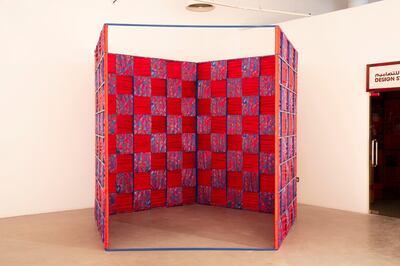
The date palm is a traditional symbol of the Emirates, but it can also be a source of inspiration for designers, as seen in the commissioned pieces on view at 1971 – Design Space. Works range from a textile installation piece by Hessa Al Suwaidi to a voluminous dress with Emirati weaving patterns by Asma Al Mazrouie. As part of the exhibition, Irthi Contemporary Crafts Council commissioned a research project on the use of the date palm as a sustainable material.
Until Saturday, February 8, 2020 at 1971 - Design Space. 1971design.ae
Abu Dhabi
Abu Dhabi Art
The capital's art fair is back for the 11th time, with 24 galleries participating in its modern and contemporary sections. This year, ADA is introducing New Horizons, a section focusing on Asian art, specifically from China and India. The Beyond Emerging Artists programme will feature Ayesha Hadhir, Rawdha Khalifa Al Ketbi and Sheikha Fahad Al Ketbi, while Oliver Beer and Leandro Elrich have been selected for the commissions programme. Curator Paolo Colombo heads up this year's Gateway, which will explore how everyday objects influence artist narratives.
From Thursday, November 21 to Saturday, November 23 at Manarat Al Saadiyat and various locations. abudhabiart.ae
10,000 Years of Luxury
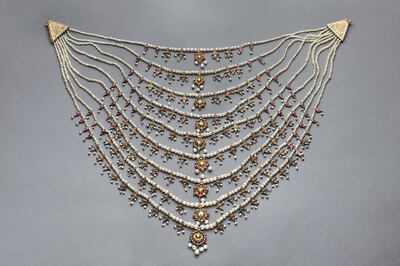
A massive exhibition of over 350 objects, Louvre Abu Dhabi's latest show takes a wide cross-cultural view of the history of luxury, from fashion, art and interior design. Highlights include the Abu Dhabi pearl, which dates back to 5800 to 5600BC and was found on Marawah Island, and opulent dresses from French fashion houses such as Chanel and Christian Dior. The exhibition coincides with Comite Colbert, a series of initiatives exploring French luxury held across Abu Dhabi.
Until Tuesday, February 18, 2020 at Louvre Abu Dhabi. louvreabudhabi.ae
Structures of Impermanence
Centring on the bah-rah or water fountain found in Syrian architecture, the exhibition looks how architecture carries social and cultural significance. In the case of the bah-rah, for example, the structure often becomes a place for social interaction, and in time, engenders rituals and traditions. A series of fountains are installed inside the gallery, removed from the context of their common use. In this new environment, the viewer’s awareness is fixed on the object itself, baring its design and material in a new light.
Until Sunday, 29 December at Warehouse421. warehouse421.ae
Luminescence
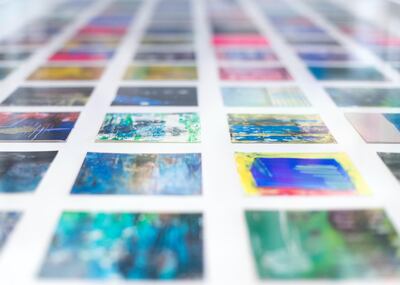
In this survey exhibition of Najjat Makki's work, themes of feminism and womanhood abound. The Emirati artist is a pioneer in the country's art scene and has been practising for more than 40 years, experimenting with different styles and mediums. She is known for her elongated female figures, which became a prominent motif in her work from the 1990s. The show traces Makki's practice through seven sections, and provides a long-overdue, in-depth look at her practice.
Until Sunday, December 15 at Cultural Foundation. culturalfoundation.ae
